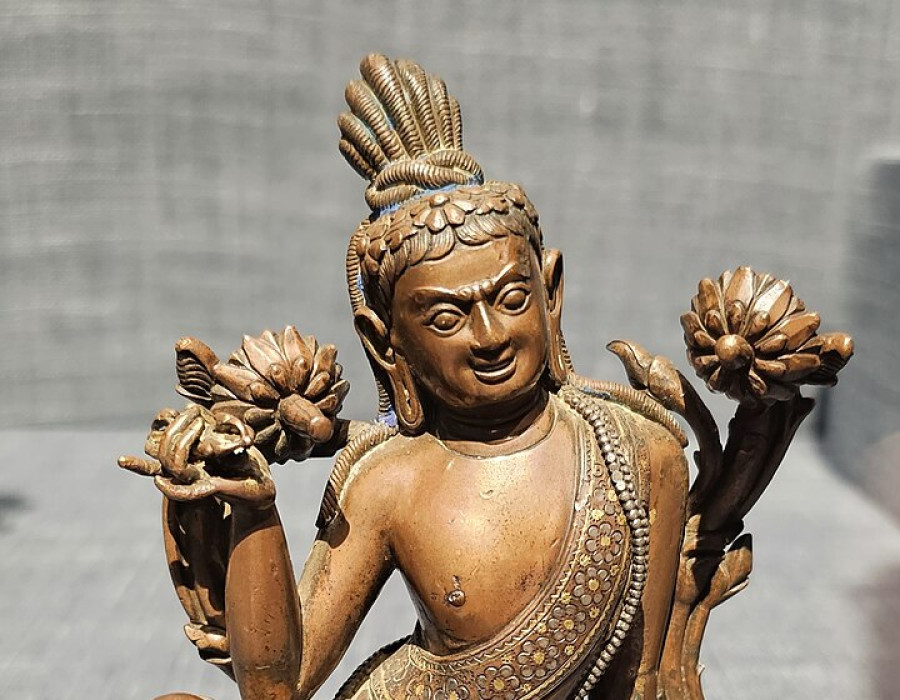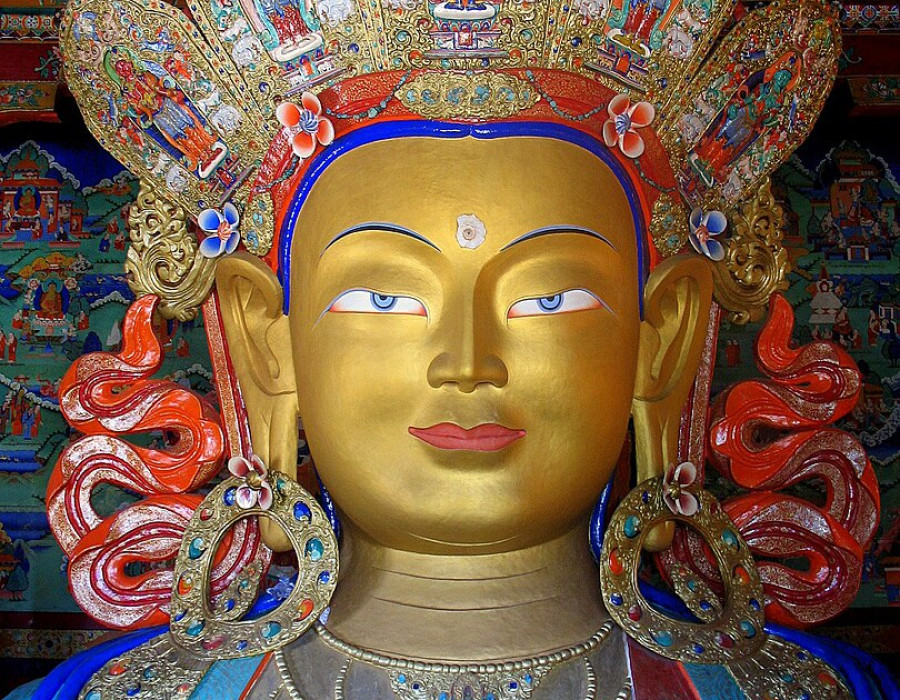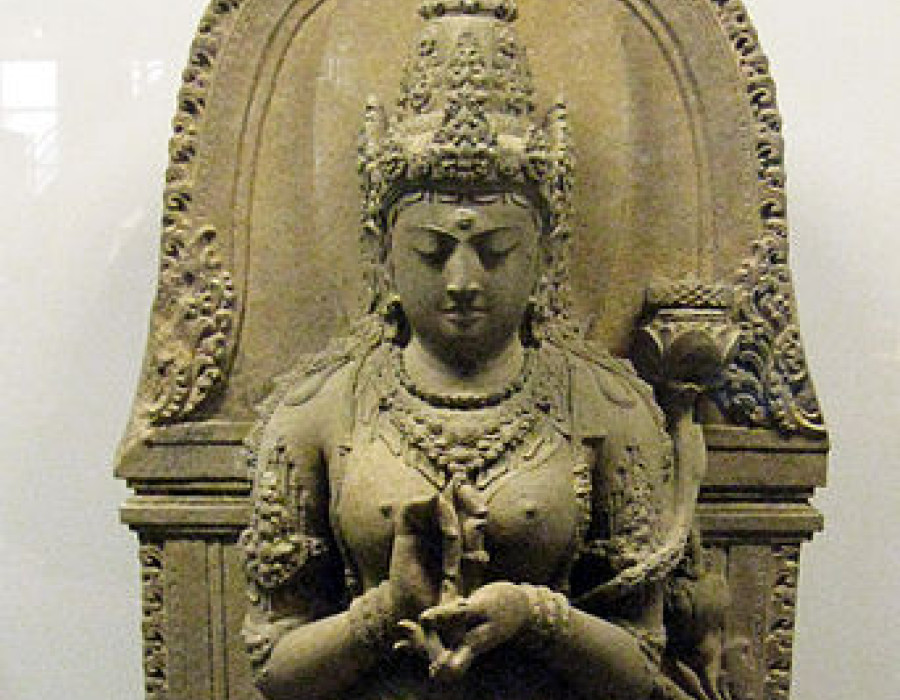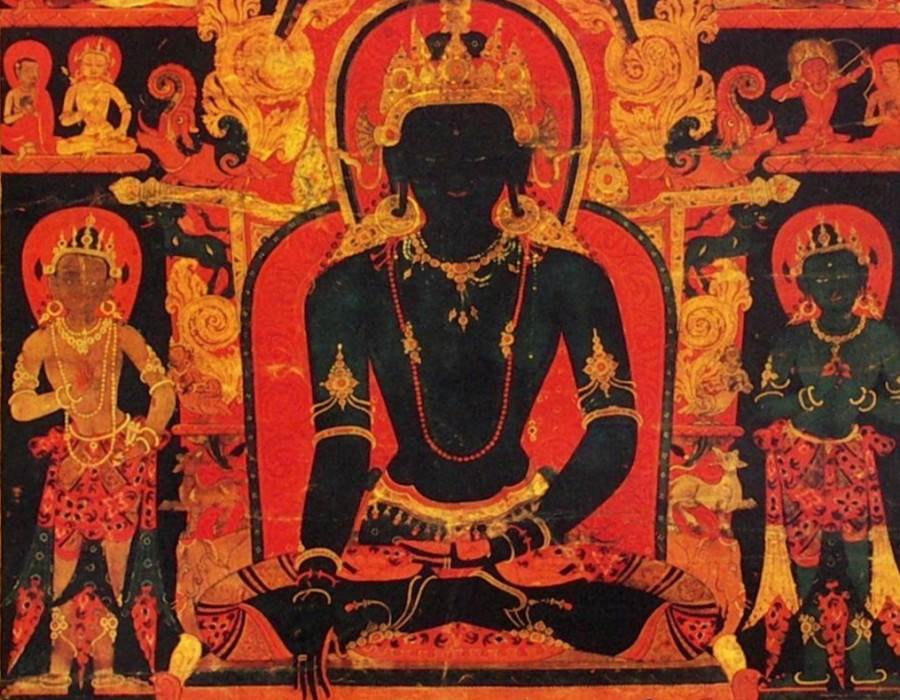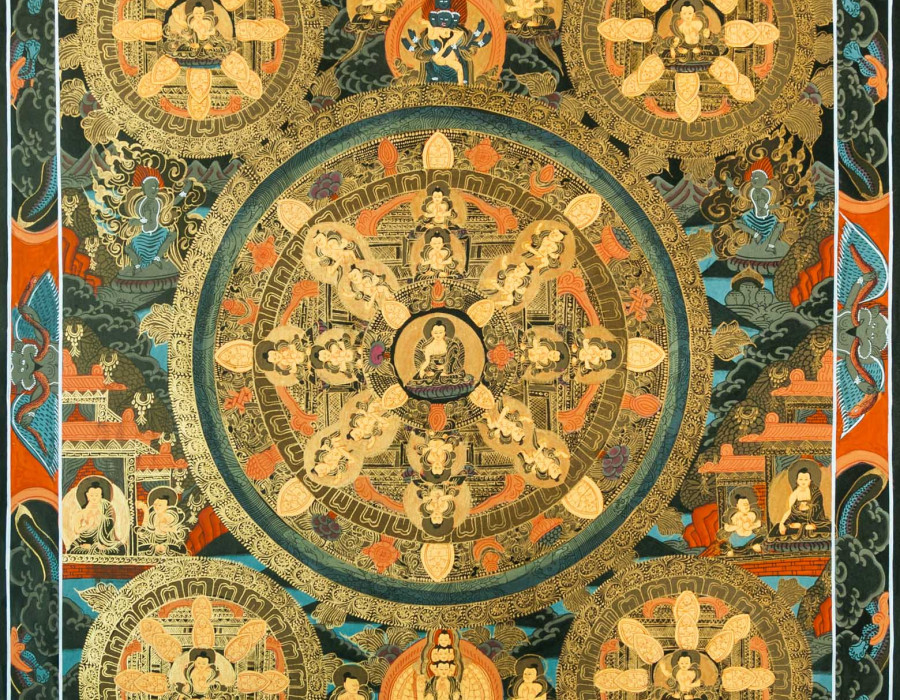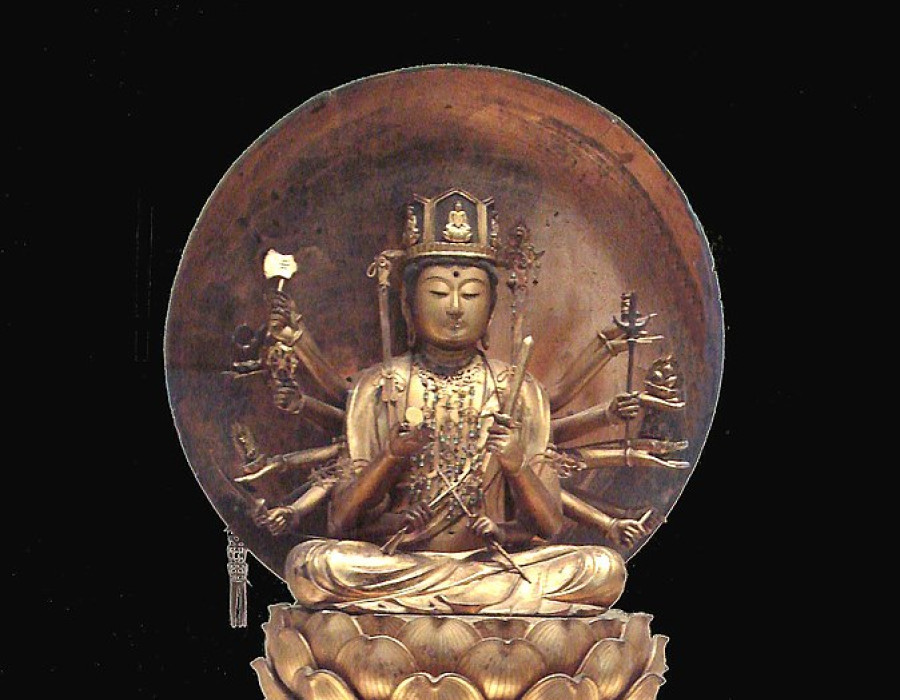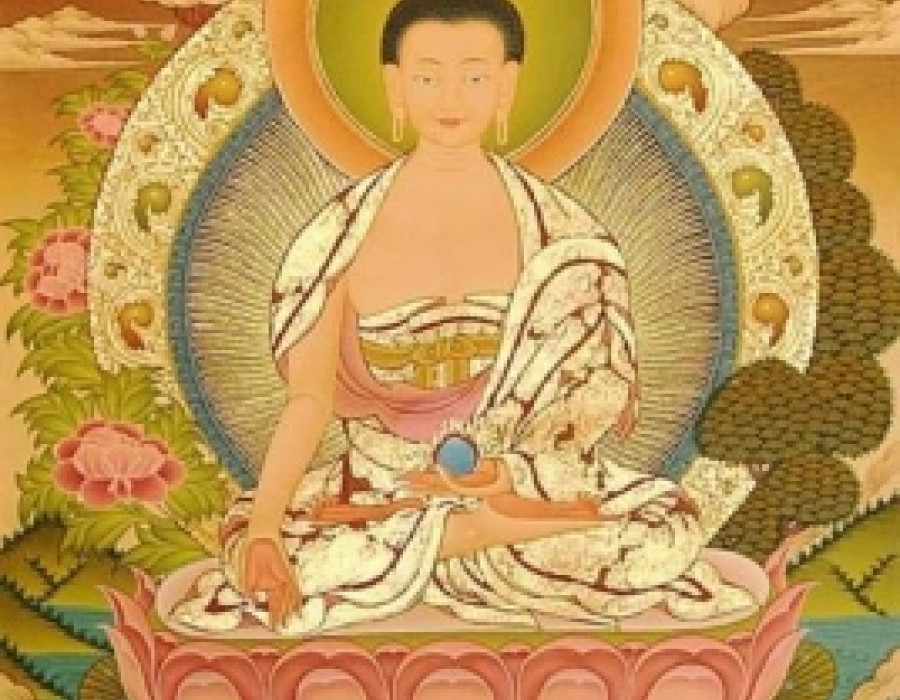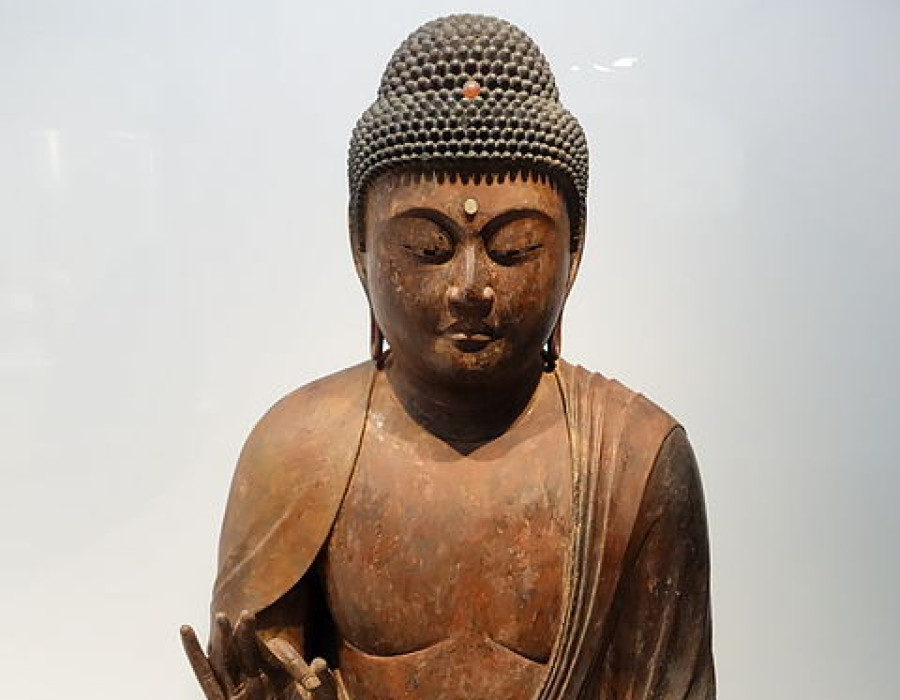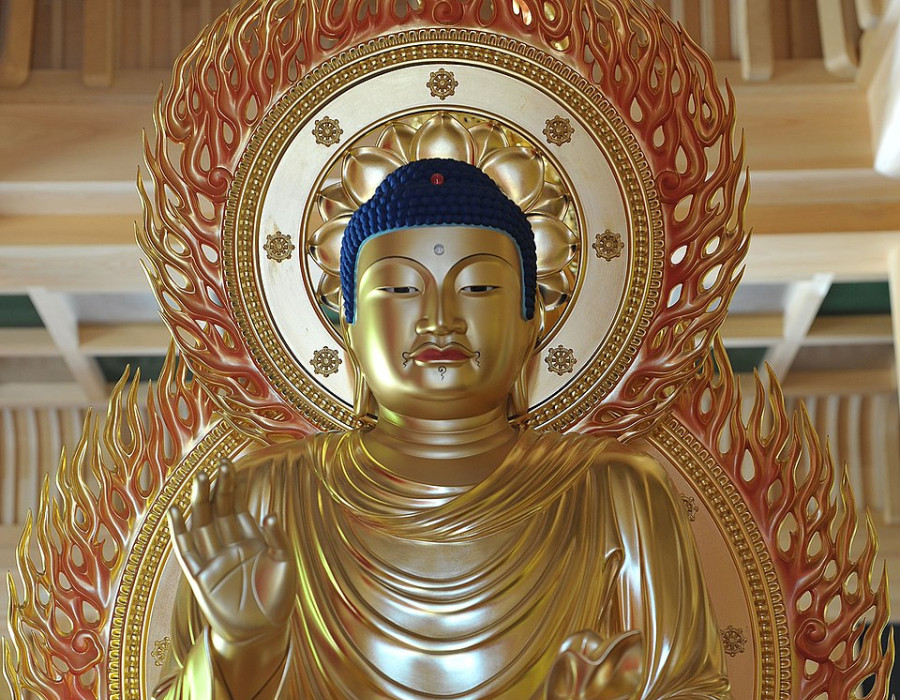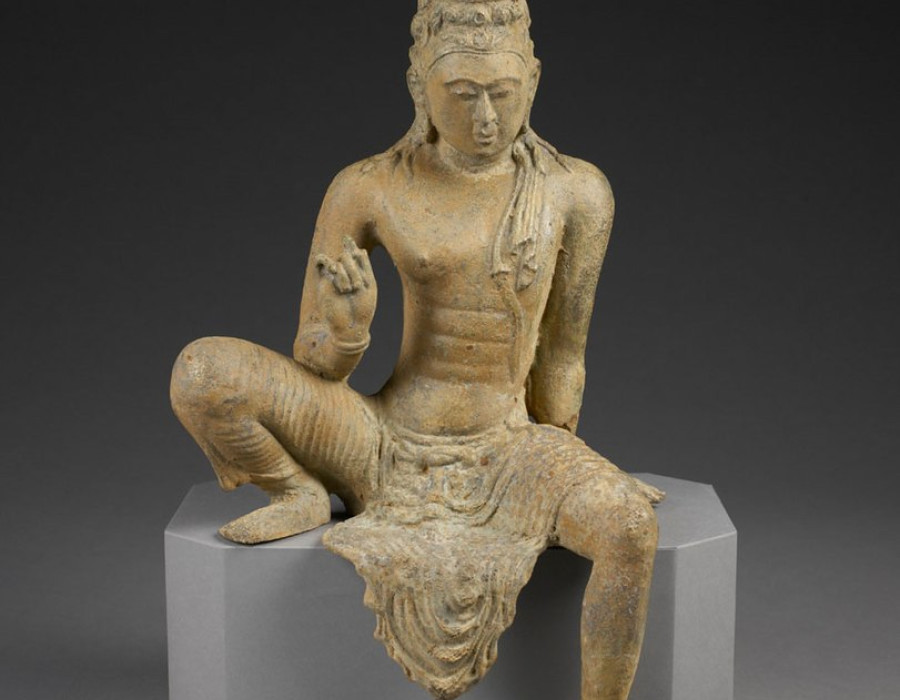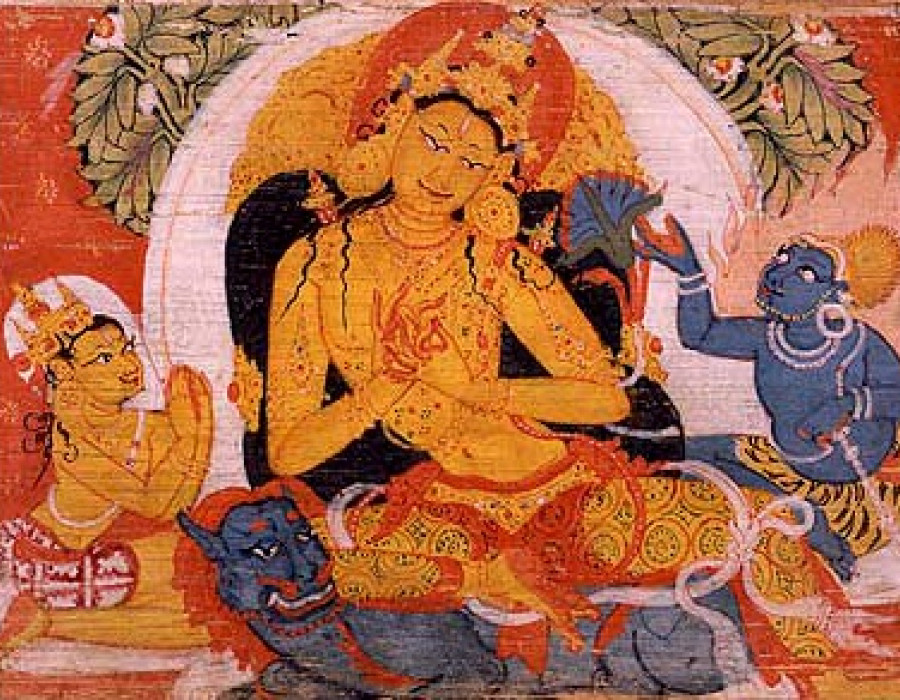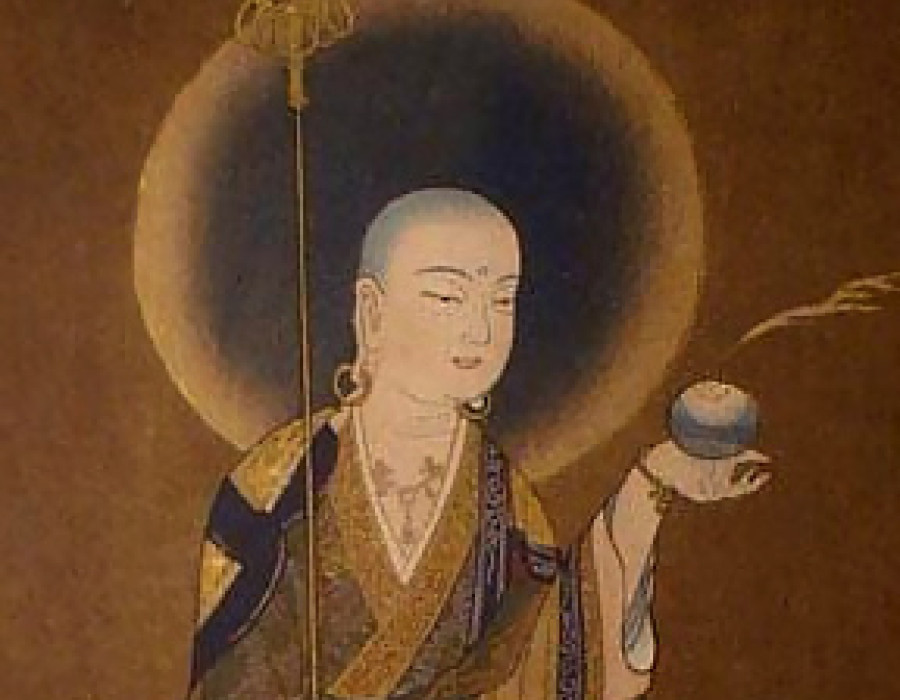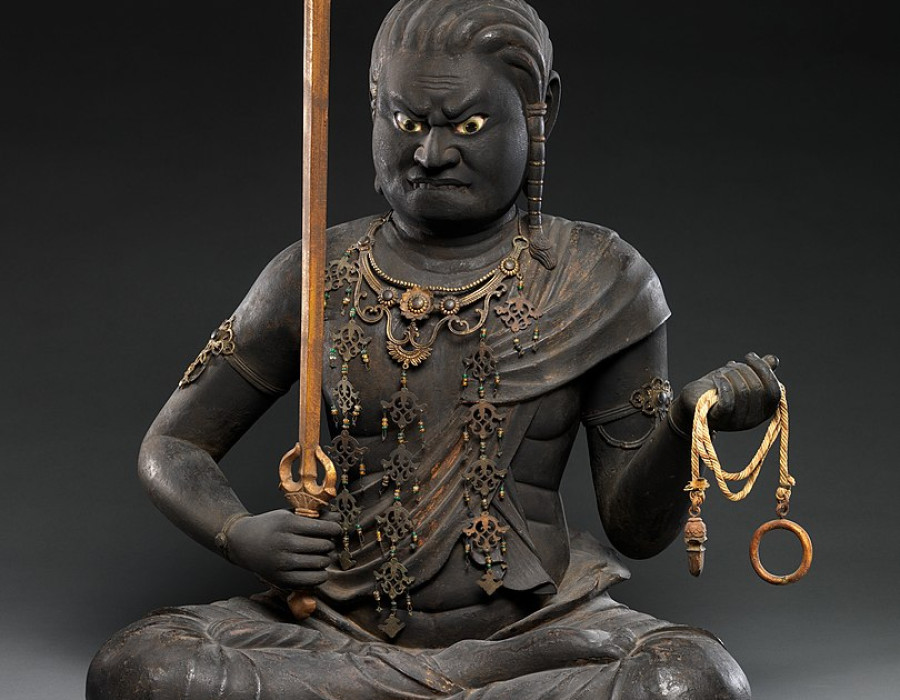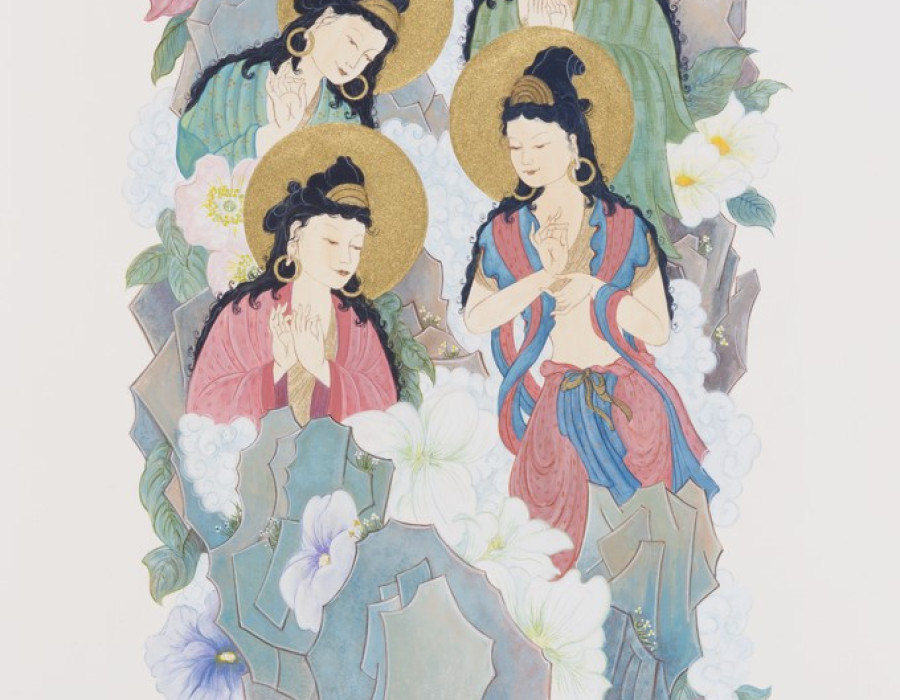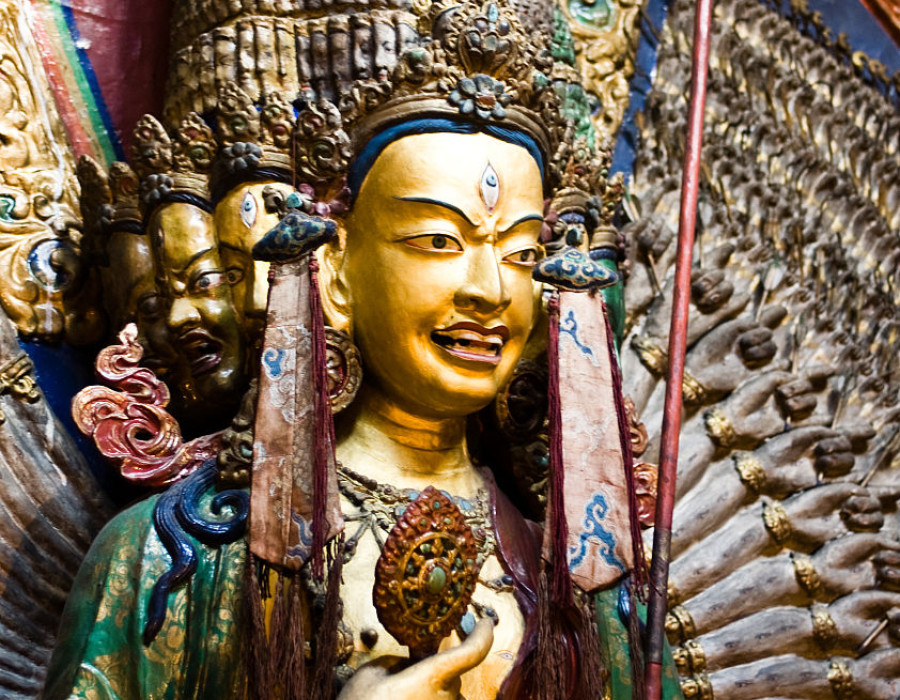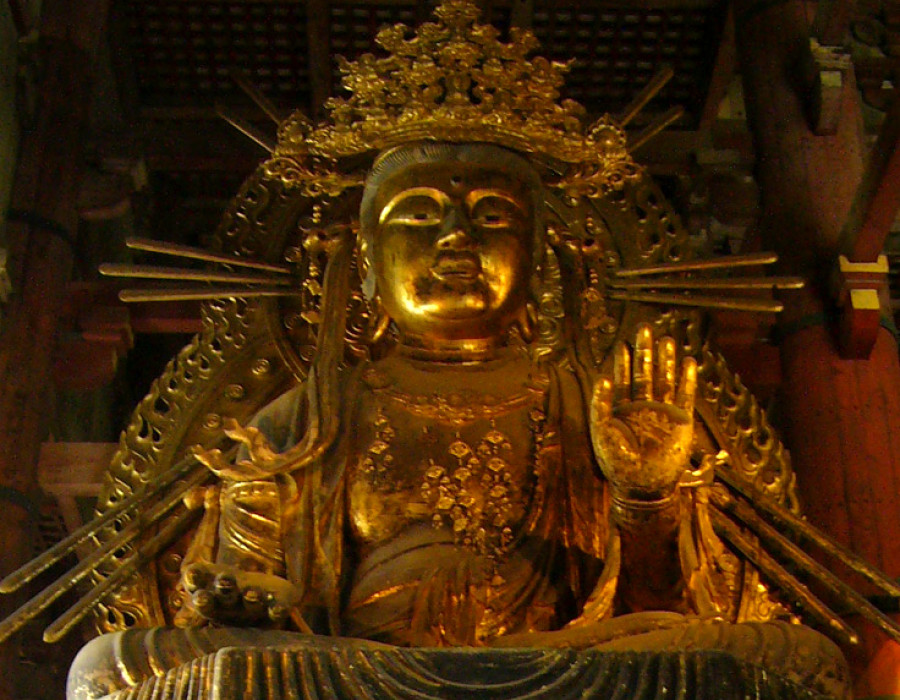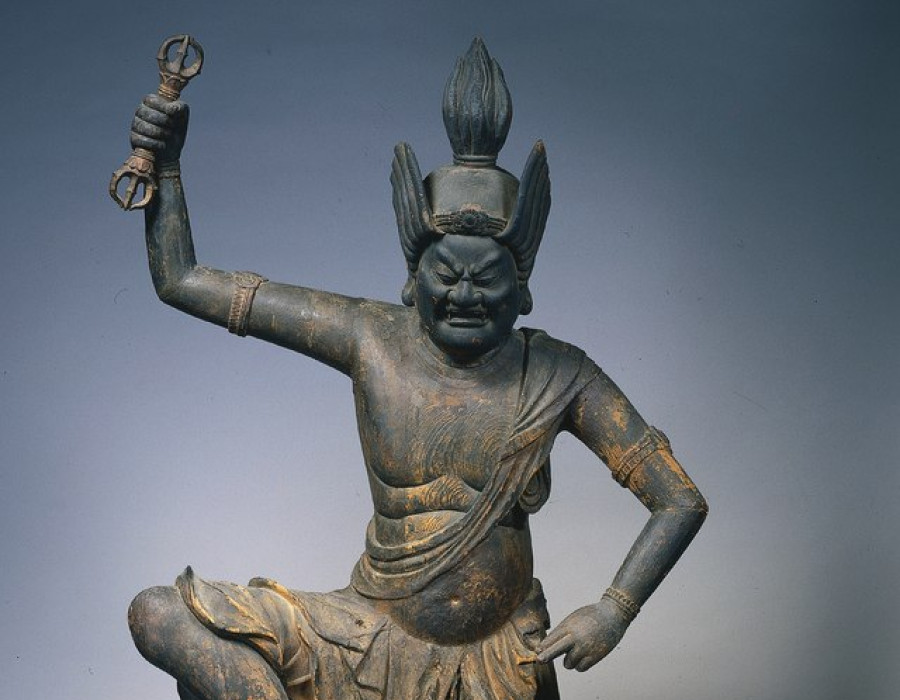
Martin Goodson
Kokūzō Bosatsu
The Way of Devotion
This Bodhisattva symbolises the cosmic functioning of the Buddha and represents ‘the great wisdom gone beyond.’
.jpg) ©
©
The Bodhisattva known as Kokūzō is the Japanese name for Ākāśagarbha whose name means ‘sky-store’ from ākāśa meaning ‘sky’ and ‘garba’ which can mean either store, seed or womb (You may be more familiar with this from the term tathāgatagarba, which refers to the ‘seed’ within sentient beings that will attain Buddhahood. Chinese Buddhism developed this doctrine into the teaching that all beings have the Buddha Nature which is to be realised by practitioners).
A clue as to his power and function can be gleaned from an understanding of how the term ‘sky’ is often used in Buddhist symbology. A common metaphor for Enlightenment is the clear sky with no clouds to obscure the view, which refers to the eradication of wrong views that cause our suffering according to the teaching of the Four Noble Truths. Thus ‘sky’ becomes a wide-open vista for the manifestation of wisdom.
Thus, wisdom comes from this clear seeing which takes in what is seen just as it is without the discriminations of ‘I’ with my opinions and prejudices.
Thus, he is a Bodhisattva, one of the eight, who symbolise the cosmic functioning of the Buddha. He represents Wisdom in its capacity to be boundless as space. Another name for him is Gaganagañja which means ‘sky jewel’, the jewel being a metaphor for the Buddha, his teachings and the Buddhist community - the Triple Gem.
A clue to this wisdom may be found from his mantra:
nōbō akyasha kyarabaya om arikya mari bori sowaka
which translates as:
“Homage to the Flower-Garland Lotus-Crown Noble Enemy of Desire.”
The Flower-Garland Sutra also known as the Avataṃsaka Sūtra is said to contain the most profound of the Buddha’s teaching expounded from his own Enlightenment. It teaches the interconnectedness of everything and uses the image of Indra’s net of jewels to explain this form of wisdom. A net runs throughout all things in the universe, length, breadth and height. Where three threads intersect there is a jewel. Each jewel reflects itself and also reflects each and every other jewel throughout the universe. Should one move, however slightly, it would simultaneously reflect in all the jewels. Thus,it can be said that inside each mote of dust is the whole universe and yet the universe does not shrink down to fit inside the dust mote, neither does the dust mote expand to contain the universe.
This gives a sense of the expansive and unbound nature of wisdom that Kokūzō Bosatsu represents.
There is a shorter mantra to invoke this Bodhisattva: Namu Kokuzō bosatsu
The founder of Japanese Shingon Buddhism, Kūkai, was said to have used a devotional practice to this bodhisattva for many years until he founded his own school.
Amongst the laity, this Bodhisattva is called upon for wisdom and even as a cure for memory loss!
_-_Google_Art_Project.jpg) ©
© wikicommons


